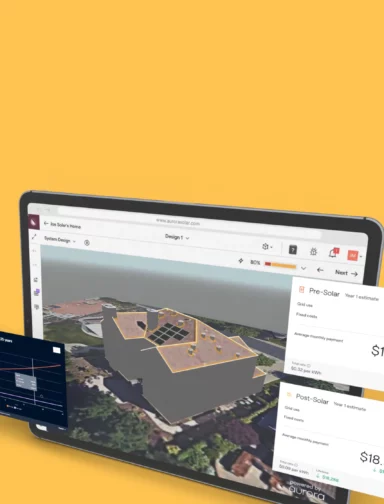It’s no secret that the demand for solar is growing rapidly, thanks to years of decreasing costs, the extension of the solar investment tax credit (ITC) in the Inflation Reduction Act of 2022, and factors like energy independence, and a solid ROI. As the solar market evolves, the permitting processes for residential and small-scale commercial solar have taken many forms and continue to adapt and change.
Staying up to date with, and even ahead of, building codes and permitting processes and requirements is a key element of staying competitive and delivering value to customers in this market.
In this guide to solar permitting, we’ll look at this important, and oftentimes intimidating, process.
What is solar permitting?
Permitting is a critical step to most construction projects in the United States, and solar installations are just a small part of the overall permitting landscape. Authority Having Jurisdictions (AHJs) are responsible for implementing and enforcing building standards and practices. They do this through the permitting and inspection process.
Contractors are typically licensed through the state and are required to know and comply with each AHJ’s requirements for installing a solar project within that AHJ’s purview. A contractor that sells and installs a system without obtaining a permit can face fines, removal of the system and remediation of the home, and having their license revoked.
Solar permitting is essentially divided into three main steps:
- Permit application and approval, where a contractor outlines the project details and work they’ll perform to install the system
- Inspection and approval, where the AHJ visually inspects the system to ensure it was installed as designed and permitted, and is safe to operate
- Interconnection and permission to operate, often referred to as “PTO”, where the contractor has to provide the system details to the utility that manages the grid the system will be connected to. This is typically a separate process from permitting and inspection, although some AHJs are also municipal utilities.
Permitting requirements can differ considerably from AHJ to AHJ. Some states have statewide building code adoption, but the building codes leave a lot of room for interpretation by the building and fire officials of each AHJ. The building codes also vary by factors based on the scope of work. For example a ground mounted solar system will have different requirements than a system mounted on an existing roof. This means plan set designing and permitting can be one of the most time-consuming steps of the customer experience.

The time it takes to get a solar system permit approved can vary from instantaneous to months, so doing everything you can on your end to make the process as efficient as possible is critical — both to begin construction in a timely way, and to connect the system to the electrical grid quickly when the install is complete.Initiatives such as the SolarAPP aim to modernize the solar permitting process for local governments by helping them to expedite approvals and lower administrative costs.
Why do I need to get a permit for solar installations?
Without permitting and inspection, solar systems could be installed in a way that poses a safety risk to homeowners and anyone that may come in contact with the system. Permits are required for most construction related work, from water heaters to roofing, with different building codes and standards applying to their respective areas so that homes and buildings are as safe as possible. Solar is no exception.
New to the solar industry? Download Aurora Solar’s free guide, PV Education 101: A Guide for Solar Installation Professionals.
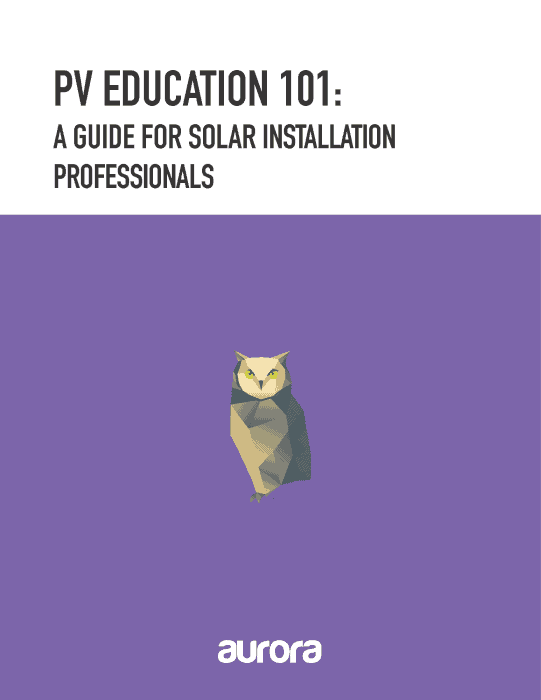
Where do I get solar installation permits?
Grid-tied solar permits must be obtained from two primary parties: the local authority having jurisdiction (AHJ) and the electric utility that serves the property. Depending on where an installation is located and the type of project, the local building AHJ may be the town, city, county, state, or federal government.
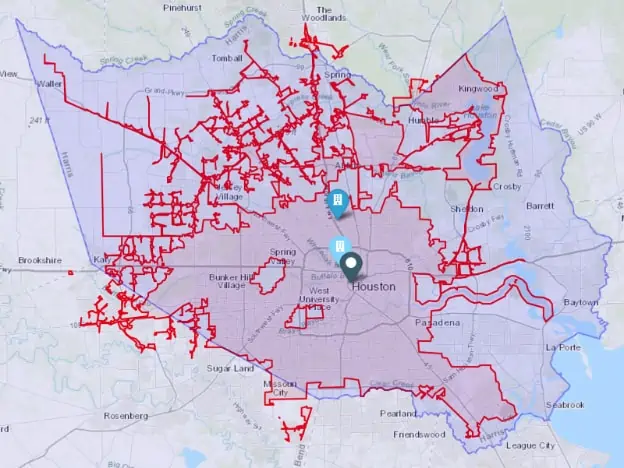
Before applying for a permit, the contractor needs to identify the AHJ and the building requirements to follow, and complete a plan set, typically. The plan set is essentially the blueprints for the system to be installed. It will include the project address, customer info, contractor info, component details, electrical and structural calculations, and anything else the AHJ may require.
With the plan set in hand, the contractor needs to know the permitting process the AHJ uses. Many AHJs have adopted online instant permitting and interconnection solutions like SolarAPP+ and Powerclerk or built their own like the City of Los Angeles. Other AHJs will have PDF, or physical, forms to fill out with additional details, many of which are from the plan set and calculations within it.
Many AHJs still require an authorized representative of the contractor to physically go to the AHJ’s building department with the plan set and apply for the permit in person.
Do you need a permit for off-grid solar?
Although it’s true that you may not need a local utility permit for an off-grid solar installation, you will most likely need a building permit to construct a battery-backed PV system. Off-grid permits are left to the discretion of the local AHJ, and there are many parts of the country where zoning requirements prevent homeowners from completely disconnecting from the grid.
What are the requirements for solar permits?
If you’ve been paying attention, you’ll know that solar permit requirements vary tremendously around the country. Installers serving multiple cities and counties (and states) should do their best to familiarize themselves with any variance in local solar permit requirements to keep customer communication accurate and avoid slow-downs during the construction process. Some states, such as California, publish solar permitting guidelines to inform AHJs and installers what needs to be included and checked.
Typically, plan sets must be submitted to make sure they meet local code requirements for building, fire safety, and electrical standards. This includes accurate PV system information such as the components, physical size, and energy capacity, as well as details about the mounting hardware and module placement.
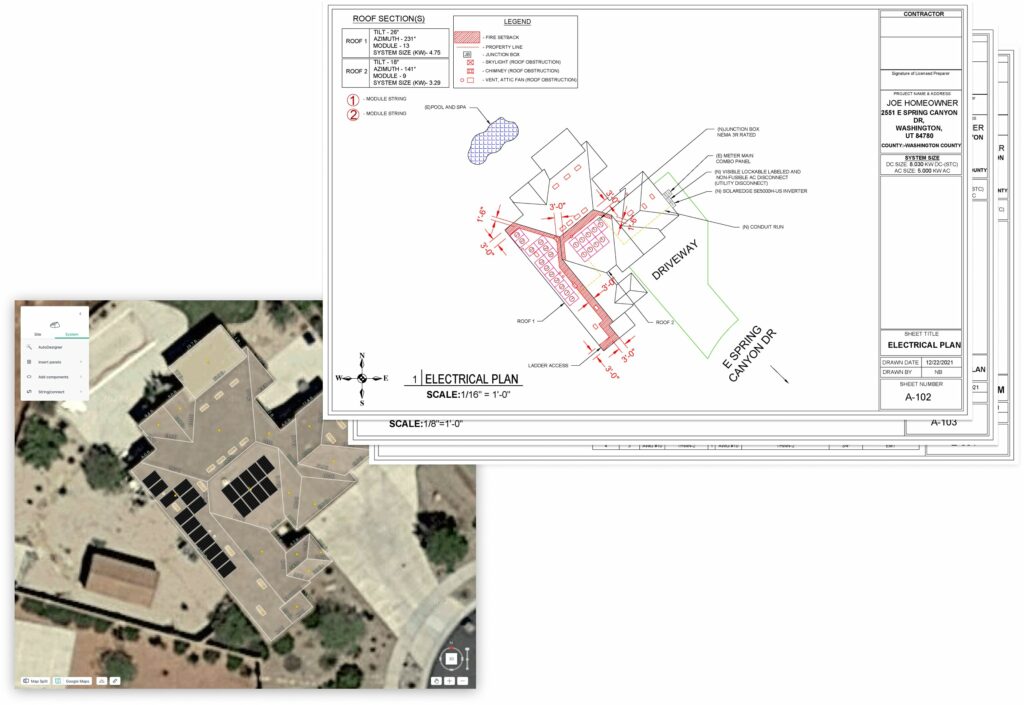
To zoom in even further past federal, state, and local solar permit requirements, homeowners associations (HOAs) may also have some control over a PV installation. For example, to obtain HOA approval, customers might need to paint electric conduits in certain colors or reconsider panel placement to not face the street. With this said, many states have solar access laws that prevent HOAs from blocking renewable energy installations. Since approving solar permits manually requires many details to be considered, some states like California are trying to automate the solar permitting process. With faster and even instant approval for professional site designs, solar companies can spend less time waiting for permission to install or connect their customers’ systems to the grid.
Steps to get your solar permitting
Once you’ve drafted the plan set and the customer has agreed to move forward with an installation, the clock for your project timeline begins ticking. Installers hoping to stick to a reasonable timeline have to begin the solar permitting process as soon as possible.
1. Contact your local authorities for a permit
First, you’ll need permission from the AHJ, electric utility, and possibly HOA to build your system. Building codes are typically found online, and businesses can also reach out to their local offices to speak with an actual person over the phone. Solar permitting may be handled by a dedicated office or the existing building department within the city, state, or county government.
Aurora Solar’s AHJ database makes it easy to identify which of the tens of thousands AHJs is the right jurisdiction for your specific solar project. This is done automatically when the project is created and is linked on the project overview page, and retrievable via API. Aurora Solar’s software will identify the AHJ and provide a reference of the requirements needed to keep in mind for permitting. More than that, it provides a space for team members to enter and store additional AHJ requirements and information to ensure teams are aligned throughout the project lifecycle.
Learn more about how to end solar AHJ headaches with Aurora Solar
2. Fill out all necessary forms
As you might imagine, solar permits involve a lot of paperwork. While experienced solar installers know what to expect for each AHJ, several forms may be needed to officially submit a project for construction approval. For companies hoping to adhere to project timelines, it’s crucial to complete and submit those forms as quickly as possible.
3. Pay permit fees
Along with submitting an application, permit fees must be paid. (Solar installers should include these expenses in their customer contracts.) Permitting fees are typically several hundred dollars, and vary between different utilities and governments. To help curb the costs of solar permitting for both installers and their customers, advocates like the California Energy Commission (CEC) have pushed forward grant funding for online solar permitting.
4. Get approval
Once you’ve officially applied for your permits, they will either be approved or rejected by the local AHJ or utility. If rejected, the AHJ will typically provide guidance on what needs to be changed in order to meet local code requirements, so that the design can be revised for resubmission.
5. Install
If an application is approved by both the utility and AHJ, installers can begin construction immediately. Solar companies and their customers should work together to establish an expected installation timeline to prepare for the final permitting steps.
6. Go through inspection and final approval from authorities
Once a solar system has been installed, a final inspection and permission to operate is required from both the local AHJ and utility. If everything was installed to plan, there should be very few surprises at this step, since both parties will have already approved the system design.
During final inspections, local authorities ensure that the system has been installed properly and is fit for safe operation. Once these final approvals are made, the systems can officially be switched on and begin generating solar electricity.

FAQs
Finally, to cross our t’s and dot our i’s, here are five quick answers to some of the most frequently asked questions about solar permitting.
How long does it take to get a solar permit?
It varies across the country, from AHJ to AHJ and even from project to project, but obtaining a solar permit can take anywhere from instant to a few months. While applying for initial building permits involves submitting a plan set, the final inspection and permission to operate typically requires a visual review. THis is typically done in person, but some have adopted virtual inspections with photos or live video from the site, which must be scheduled ahead of time with local governments and utilities.
Are there different requirements for solar permitting on the federal and state level?
Yes, requirements are typically implemented and enforced at the local AHJ level. There aren’t nationwide requirements as to which versions of the building codes an AHJ must follow, though some states do dictate what a local AHJ can follow. Around the country, solar permitting laws may vary for wiring configurations, interconnection methods, disconnecting and metering means, max system sizes, mounting hardware configurations, setback requirements (the amount of room between solar panels and the edge of a roof), panel orientation, aesthetic guidelines, and more.
How much are solar permit fees?
Like all things in residential solar, permitting fees differ in various parts of the country, with some states like Colorado capping the costs for permits to prevent excessive charges from cities, states, and utilities. Residential installations will generally incur a total solar permitting fee of at least $300 but rarely exceed $1,000.
What is a DIY solar permit?
Some AHJs will have options like an “owner builder” permit application, which is typically only able to be applied for by the owner when they’re also the occupant. For example these typically wouldn’t apply if the owner was a landlord and the building was tenant occupied. If you choose to install your own solar panels, their safety and operation are assessed with the same standards that a professionally installed system is evaluated. In many AHJs, a licensed electrician is required to complete the electrical connection portion of the installation to the grid.
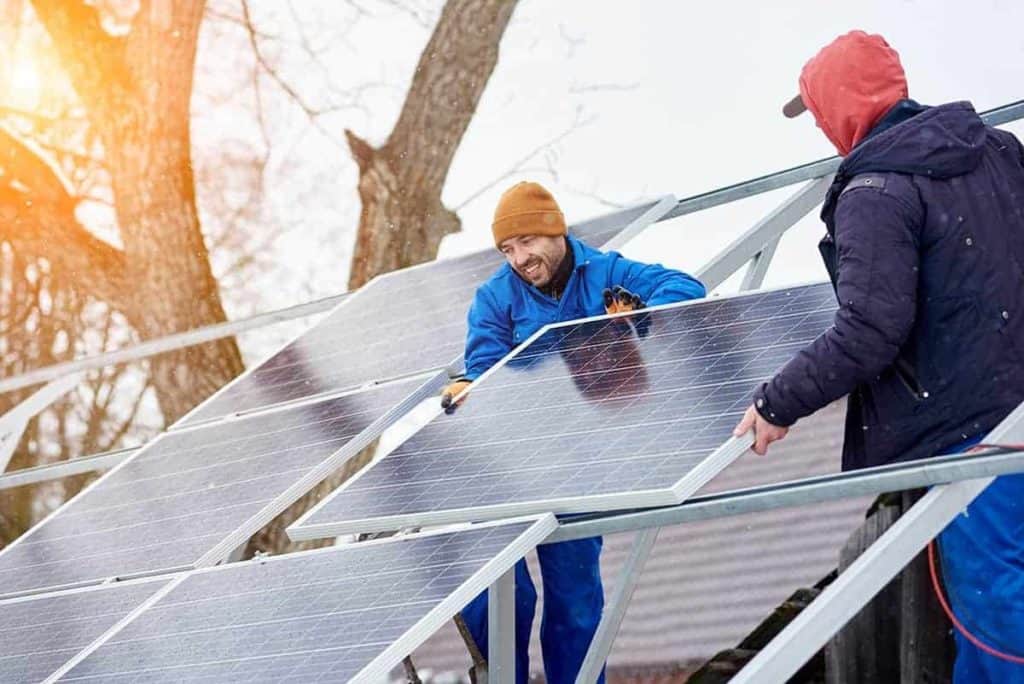
Is there a simplified permitting process?
Yes, there are many ways to speed up the solar permitting process both on the installer and local government side of the equation. Local governments looking to speed up their solar permitting process can adopt simplified procedures for small commercial and residential installations, and use modern technologies for instant or expedited approvals.
If you’re interested in learning more about how Aurora can help with your design and permitting process, schedule a quick demo.


